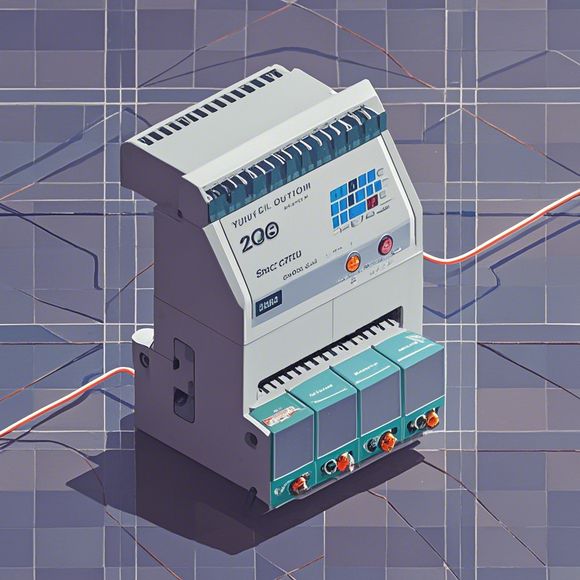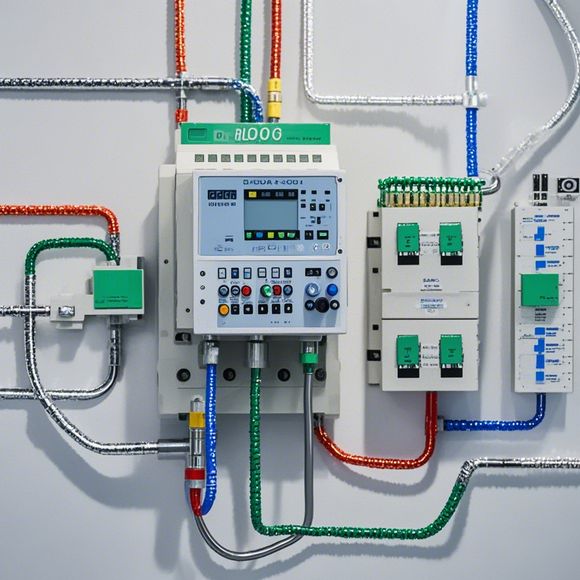PLC Controller Wiring Guide: A Step-by-Step Guide for Beginners
Introduction:
Welcome to the world of industrial automation! If you're looking to streamline your manufacturing processes and enhance efficiency with a smart, reliable solution, consider integrating a Programmable Logic Controller (PLC) into your operations. But how do you go about wiring up your PLC controller? That's where our guide comes in! We've compiled a comprehensive overview of the essential steps involved in setting up your PLC controller, from initial planning to final configuration. So grab a cup of coffee and let's dive into this exciting journey together!

1、Preparation:
Before we dive into the technical details, it's important to have a clear understanding of the components needed for successful PLC installation. Here's what you'll need:
- A power supply: Ensure that your PLC is connected to an appropriate power source. The voltage and current requirements will depend on the specific model of PLC you choose, so double-check the documentation provided by the manufacturer.
- Connectors: You'll need to purchase the correct type of connectors for the wiring cables you plan to use. This can vary depending on whether you opt for wired or wireless connections, as well as the length of the cable.
2、Wiring Diagrams:
Before starting any wiring work, take time to review the wiring diagram provided by the manufacturer. This should include information on the pinouts, colors, and other design elements that will help you identify the correct connections for each component.
3、Grounding:
Grounding is critical in industrial environments, especially when working with high-voltage systems. Make sure that all electrical devices and equipment are grounded properly. Use a grounding strap or jumper to ensure a consistent connection throughout the system.
4、Power Input:

Connect the PLC power supply to the appropriate power input terminals. Check that the voltage and current requirements are met before proceeding further. If not, consult the manual or contact the manufacturer for assistance.
5、Sensor/Transmission:
Integrate your sensors or transmission devices into the circuitry. Depending on the application, you may need to connect different types of sensors or transmitters to the PLC. Follow the manufacturer's guidelines for connecting them securely and ensuring proper functionality.
6、Control Module:
Once everything is connected, connect the control module to the rest of the wiring. This may involve adding more cables or adjusting existing ones to accommodate the new components. Pay special attention to ensuring that all connections are secure and free of loose wires.
7、Testing:
After completing the wiring, test the entire system to ensure that it works as expected. Check for any short circuits or faulty connections, and troubleshoot any issues that arise during testing.
8、Programming:
Finally, configure the PLC software to suit your specific needs. This involves downloading the latest firmware updates, creating user profiles and programming custom logic to meet your production requirements.

9、Safety Considerations:
While we've covered the technical aspect of wiring, it's crucial to remember safety precautions. Wear protective gloves and eyewear while working with electricity, and follow all necessary safety guidelines to avoid accidents.
10、Maintenance:
Lastly, don't forget to regularly inspect and maintain your PLC system to ensure its longevity and optimal performance. This includes replacing worn-out components, updating firmware, and following recommended maintenance schedules.
In conclusion, installing a PLC controller requires careful planning and attention to detail. By following the steps outlined above and staying informed about your equipment and its requirements, you'll be well on your way to achieving efficient automation in your industrial processes. Remember to consult the manufacturer's documentation for specific instructions and recommendations tailored to your particular setup. Happy wiring!
Content expansion reading:
Articles related to the knowledge points of this article:
PLC Controller Selection Guide for Foreign Trade Operations
PLC Controller for Manufacturing Automation
How to Use a PLC Controller for Your Business
PLC (Programmable Logic Controller) Control System Basics
The Role of Programmable Logic Controllers (PLCs) in Foreign Trade Operations